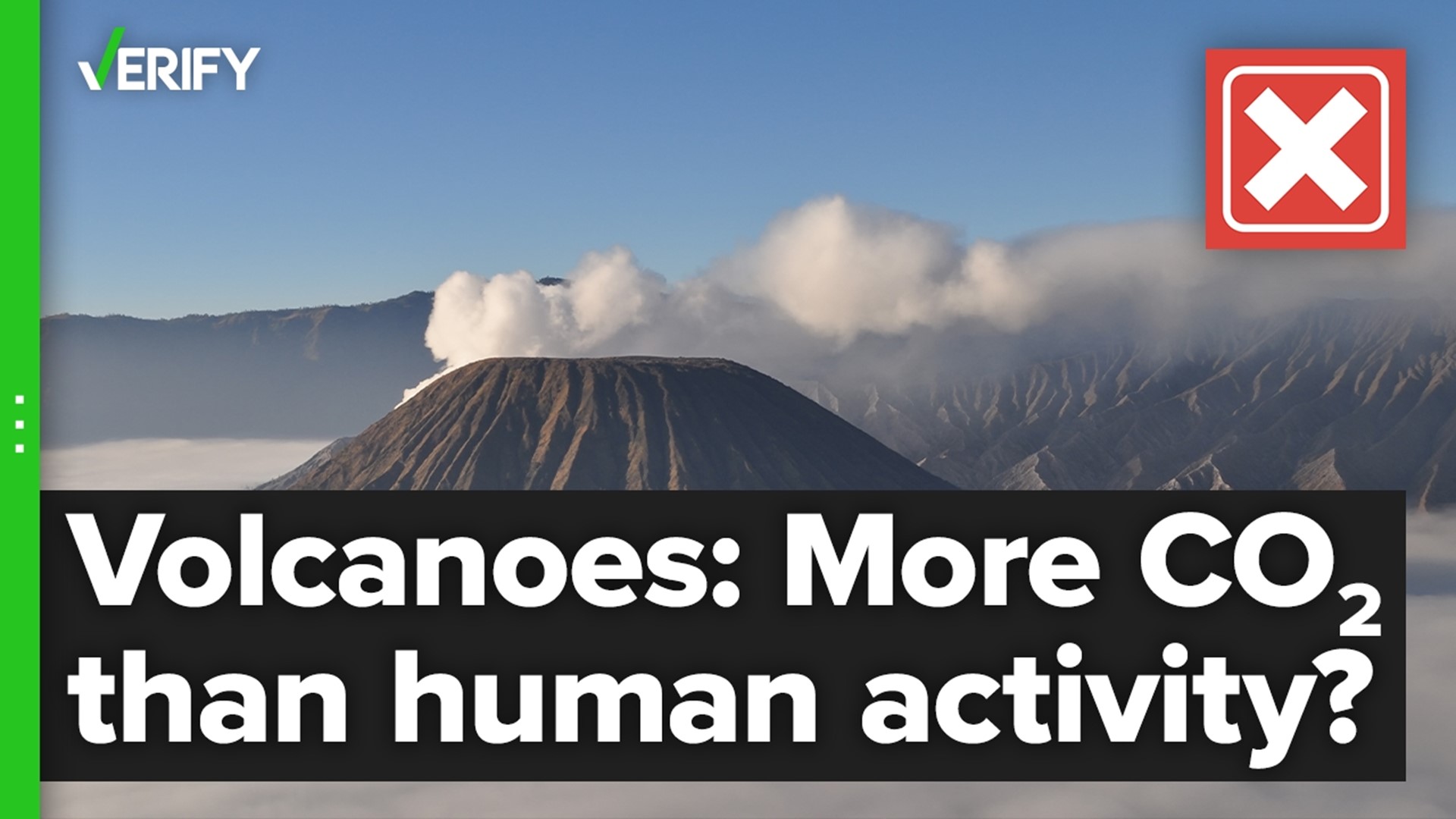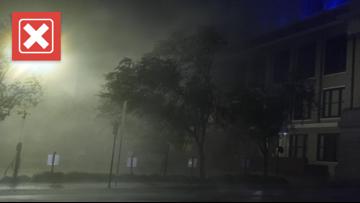World leaders are continuing to discuss how to combat climate change at a United Nations summit, called COP26, in Glasgow, Scotland. To coincide with the conference, VERIFY is publishing several stories this week related to climate change. You can read more here about how chocolate production is contributing to deforestation.
Since Hawaii’s Kilauea volcano began erupting in late September, it’s been sending volcanic gas into the air. That’s led to claims on social media that volcanoes are a significant source of carbon dioxide emissions. One post says that volcanoes produce more carbon dioxide than humans can in 100 years.
THE QUESTION
Are volcanoes more responsible for carbon dioxide emissions than humans?
THE SOURCES
THE ANSWER
No, volcanoes are not more responsible for carbon dioxide emissions than humans.
WHAT WE FOUND
Volcanoes emit carbon dioxide via eruptions and underground magma, according to the National Oceanic and Atmospheric Administration (NOAA). Carbon dioxide from underground magma gets into the atmosphere through openings in the earth and from water that flows into volcanic lakes and hot springs.
Estimates about how much carbon dioxide is emitted by volcanoes vary. A 2013 study estimated that global volcanic carbon dioxide emissions topped more than 500 million metric tons per year. The U.S. Geological Survey (USGS) says the “highest preferred estimate” of yearly carbon dioxide emissions by volcanoes is 260 million metric tons.
Both estimates are far less than the 33.2 billion metric tons of energy-related carbon dioxide the International Energy Agency says was emitted throughout the world in 2019.
In an article published in 2016, the NOAA said each year human activities emitted at least 60 times the amount of carbon dioxide that volcanoes released.
Related story: Verifying or debunking 10 claims about our climate
NASA says while a large, violent eruption may match human emissions for a few hours, it pales in comparison to the amount of human-produced carbon dioxide over a year.
“Essentially, CO2 emissions from human activities dwarf those of volcanoes,” NASA says on its website.
For example, when Mount St. Helens erupted in 1980, the USGS estimated that the volcano sent 10 million tons of carbon dioxide into the air in just nine hours. But, globally, humans send the same amount of carbon dioxide into the air every two and a half hours, according to the USGS.
“The carbon dioxide released in contemporary volcanic eruptions has never caused detectable global warming of the atmosphere,” the agency said.
The NOAA said volcanic eruptions today often have the opposite effect of warming the climate.
“That's because carbon dioxide isn't the only thing that volcanoes inject into the atmosphere,” the NOAA says. “Even small eruptions often produce volcanic ash and aerosol particles. Whether from small or large eruptions, volcanic aerosols reflect sunlight back into space, cooling global climate.”
More from VERIFY: Yes, chocolate production is a cause of deforestation












